Atlantic City was America’s first mega-resort. As early as the 1870s, Atlantic City attracted hundreds of thousands of visitors annually, most of who hailed from nearby Philadelphia where inexpensive train travel made a weekend holiday or day trip possible. By 1920, the 7-mile long Boardwalk and the magnificent piers that stretched far into the ocean were crowded with amusements of every sort. Next to the Boardwalk were the hulking hotels that, at the time, were among the largest in the world.
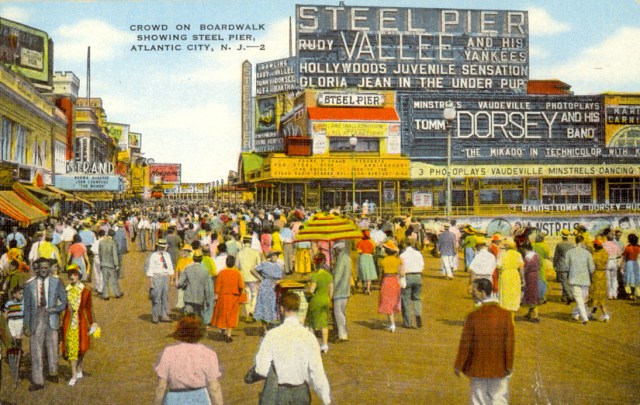
The Steel Pier in the late 1930s
From the back of the postcard: “The Steel Pier, extending almost one-half mile into the Atlantic Ocean, is surely the greatest amusement enterprise under one roof in the world. With its five theatres, vaudeville, minstrels, water carnival, ballroom dancing and unusual exhibits, its diversity of entertainment makes a visit to the Pier a vacation in itself.”
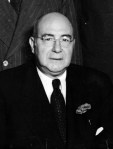
Nucky Johnson, King of Atlantic City
For 30 years, from 1911 until his incarceration in 1941 for income tax evasion, the king of Atlantic City was Enoch ‘Nucky’ Johnson, the flamboyant political boss and power broker who nurtured and protected the illegal booze, gambling, and prostitution that made the city the America’s top tourist and convention destination from Prohibition through the advent of World War II.
Writes Jonathan Van Meter in his excellent book The Last Good Time: Skinny D’Amato, the Notorious 500 Club & the Rise and Fall of Atlantic City, “Shortly after the turn of the century, Atlantic City’s personality began to split, and the Boardwalk represented a physical and psychic boundary between the two halves. On one side, there was the beach and the ocean and all the recreation that went with it, which is to say good, clean family fun. … On the other side of the Boardwalk, down dark, narrow side streets like Westminster Place, known as Snake Alley, the city was a banquet of temptation: sex, gambling, booze, drugs, gay bars, and black speakeasies. It had also become – as it remains – one of the first and only twenty-four-hour cities in America.”
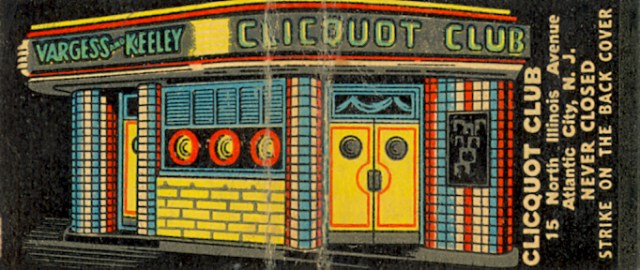
The Clicquot Club “never closed.” It was one of the notorious Atlantic City nightclubs where its illegal gambling room was the main attraction.
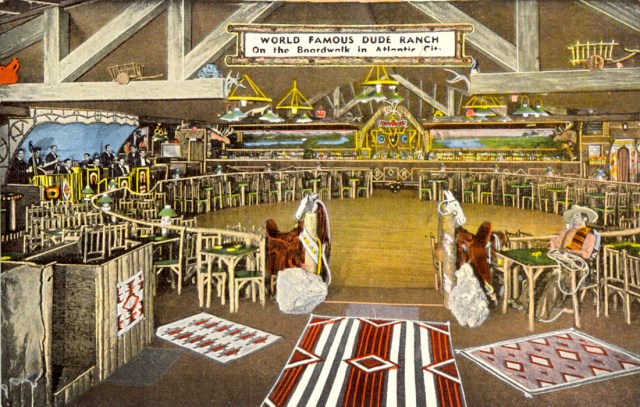
The “World Famous” Dude Ranch was a western-themed nightclub somewhat out of place at the Atlantic Ocean.
A report by the federal government from 1941 reprinted in Van Meter’s book describes the lawless atmosphere of Nucky Johnson’s Atlantic City. “The casinos were generally connected with nightclubs which acted as ‘feeders’ for the gambling rooms. For example, the Paradise Club, the Club Harlem, Babette’s, Grace’s Little Belmont, the Bath & Turf Club, the Clicquot Club, were all typical nightclubs with bar, restaurant and cabaret entertainement, but in the back of each was a gambling room containing all forms of games, such as roulette wheels, crap tables, poker, blackjack games, ‘bird cage,’ and in most instances horserace betting as well.
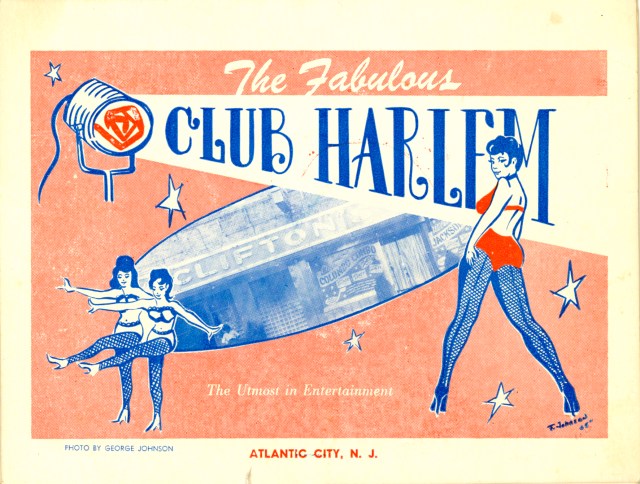
Club Harlem was a popular African-American nightclub that, as was typical of Atlantic City clubs, offered gambling in its back room.
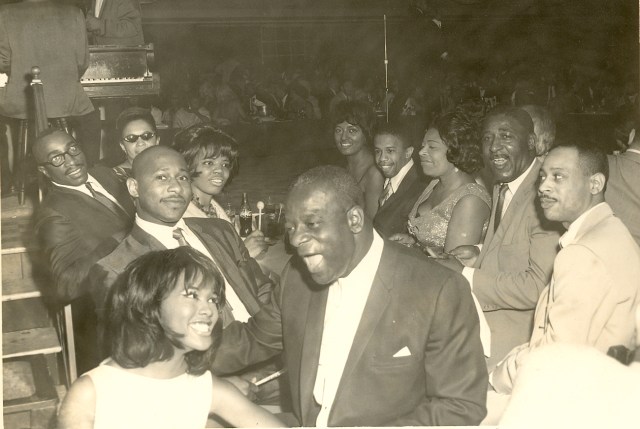
Club Harlem in the early 1960s
The nightclubs were well known and widely advertised establishments which employed high-priced orchestras and Broadway or Hollywood stars as entertainers. The proprietors of these places apparently cared little whether they made any profit on the ‘clubs’ for there were primarily gamblers and relied on the cabarets solely to bring business to their gambling casinos.”

Skinny D'Amato and his wife Bettyjane in the late 1950s
In the early 1940s, a well-connected Atlantic City casino operator named Paul “Skinny” D’Amato gained control of the 500 Café, a foundering nightclub with an illegal casino located in the back room. Within a few years, Skinny turned the renamed 500 Club into the most important nightclub in the city in no small part because of the pairing of two unlikely performers for the first time on his stage.
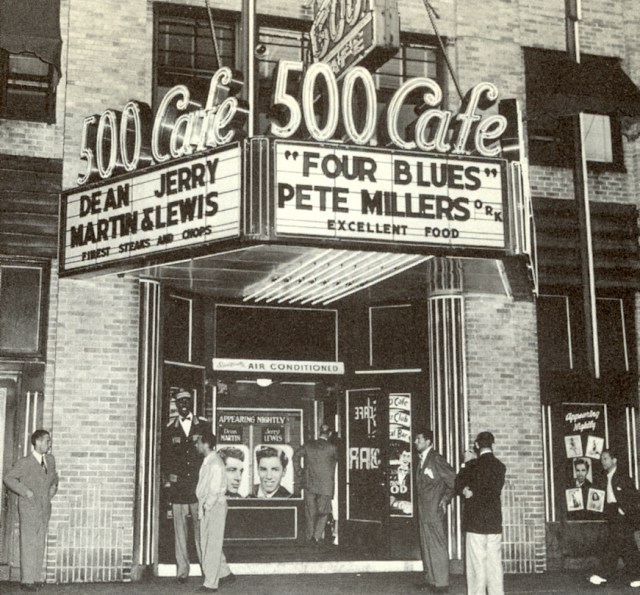
The 500 Club in 1946 when Martin & Lewis teamed up for the first time. Note Dean Martin looking to the left..
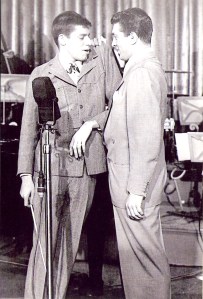
Jerry Lewis & Dean Martin in the Summer of 1946 when they first teamed up at the 500 Club
There are various accounts about how they were first teamed up at the 500 Club in the Summer of 1946, but what is certain is that by their third night on stage together there were crowds lined up around the block, frantic to witness the insane antics of Dean Martin, a debonair Italian-American crooner, and a manic rubber-faced Jewish kid named Jerry Lewis. Several years later, in 1951, at the lowest point in his career, a doleful Frank Sinatra began his comeback when his old friend Skinny booked him for an extended run at the 500 Club.

Sinatra, Sophie Tucker, Jimmy Durante, and, of course, Dean Martin and Jerry Lewis all considered Skinny D’Amato among their closest friends. Skinny’s generosity, good humor, and suave sophistication – as well as his well-publicized association with mob characters, movie stars, sports figures, and politicians – lent Atlantic City an aura of self-assurance that belied its declining fortunes in the postwar era. Indeed, by the late 1950s, air travel made destinations such as Miami Beach, Havana, and Las Vegas easily accessible, bypassing the rapidly decaying Boardwalk of Atlantic City. It took the legalization of gambling in 1979 to reverse – and erase – in a drastic and brutal fashion, the world of Nucky Johnson and Skinny D’Amato that once defined Atlantic City.


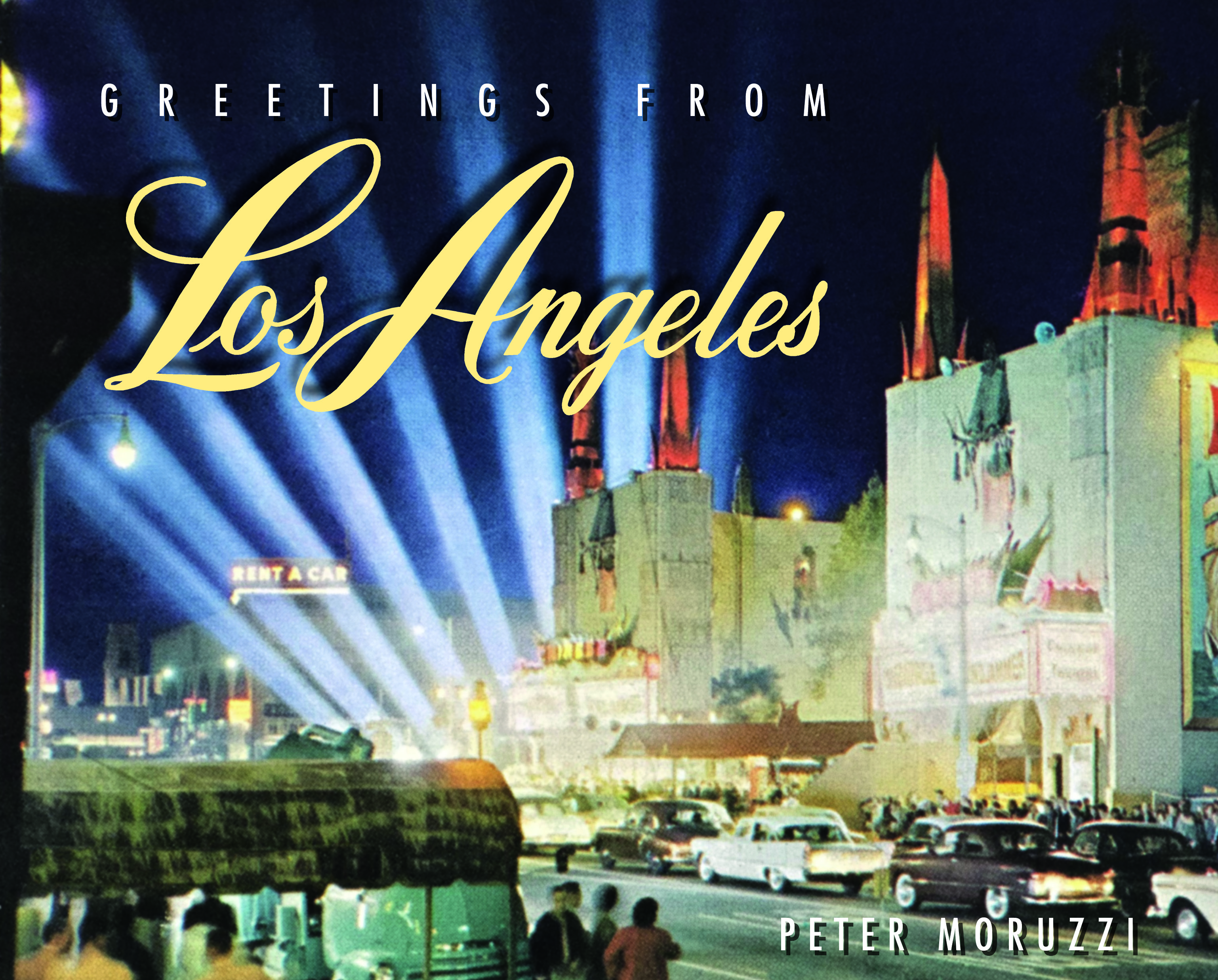


Wow, Peter, am I glad I stumbled upon your site while researching nightlife in Atlantic City. I’m not as old as Jerry Esten (he sounds older than my mother was, and she used to frequent Skinny D’Amato’s place), but I spent plenty of time at the shore, having grown up in nearby Philly. It was my great-grandparent’s destination and every generation of my family since. We had a condo on the Boardwalk in the late 70s/early 80s. I’m currently writing a book (and blogging about it at pearlsparty.wordpress.com) about my mother’s unique and wild life…some of which unfolded in A.C. back rooms and casinos.
I can’t recall hearing anything about Nucky Johnson until Boardwalk Empire. I hope by now you’ve seen it.
Do you know the Coachella Valley Repertory Theater?
LikeLike
Thanks for your comments. I watched the first few seasons of Boardwalk Empire and liked it. Where is the Coachella Valley Repertory Theater? Palm Desert?
LikeLike
where is my big type Hollywood movie on this wow! yeah I know scandals everywhere! …and imperial room in Toronto never had a scandal hey as kojak said stick with the good guys!
danny young eh.
LikeLike
It was a different time. Boardwalk empire was well done, As a kid what did I know about gangsters. And the like? what I did know was it was a great time in my life.Working on Steel Pier was. A great adventure, I ran errands for big bands! Tips of 50 cents and one dollar were enormous. Names like Krupa, W. Herman,James and the Dorseys called me by name! hey kid! I ,loved shoveling manure for the Diving Horses!
LikeLike
I also worked for Waarren Buck’s Zoo in Steel Pier. Helped with Carver’s High diving horses too.
Betty Pirella was a girl diver. I still have and cherish her photo atiop Gordonel!
LikeLike
Nice article. In 1981, me and a few freinds decided to go to atlantic city for the day. we all lost most all of our money at ceasers palace and wound up in a little dive bar that ceasers had to build around because they refused to sell, even for 1 million dollars. anyway, we spent a great day at this place and were told by the owner who had to be in his 70’s that he teamed up lewis and martin. this bar had the best italian restraunt with chrystal cabinets lining the walls all containing chrystal from various stars and photos with the owner. any idea about this?
LikeLike
Let’s see what we can learn from one of the Atlantic City experts who reads the site.
LikeLike
i WAS A BUS BOY AT THE 500 CLUB IN THE 40S. GOT TO SEE THOSE TO WILD GUYS!
DEAN & JERRY
i MUST HAVE BEEN 16
JERRY ESTEN
LikeLike
Boardwalks and entertainment piers – the start of this entire scene in Atlantic City – are pretty much a thing of the past now. I doubt that it would even be possible to build such structures on most coastlines today, with environmental laws as well as the increased awareness that an occasional storm will surely destroy everything.
And with some sort of gambling being legal in nearly all parts of the USA, that can no longer serve as the illicit backroom money-generator it once was. So…the Atlantic City seen here will never be repeated in just this fashion. Which is true of everything that’s on this site, come to think of it.
LikeLike
Great cards and synopses! Love this era too Peter, great job. Take care!
LikeLike
Now THIS is the skinny I wanted to get about Atlantic City! After I saw “Boardwalk Empire”, I was so disappointed: I didn’t get much of a sense of the special place that Atlantic City was, I wasn’t feeling the locale. In the above piece I do. Thanks Pete!
LikeLike
I haven’t watched “Boardwalk Empire” yet but it’s hard to imagine a story more dramatic and scandalous than the world that Nucky Johnson commanded during the 1920s and 1930s. Skinny was far more civilized in comparison, and a helluva lot smoother.
LikeLike
LOVE these posts! My favorite detail in this one is that most of the men in the 1930s Steel Pier boardwalk postcard are wearing suits and ties….
LikeLike